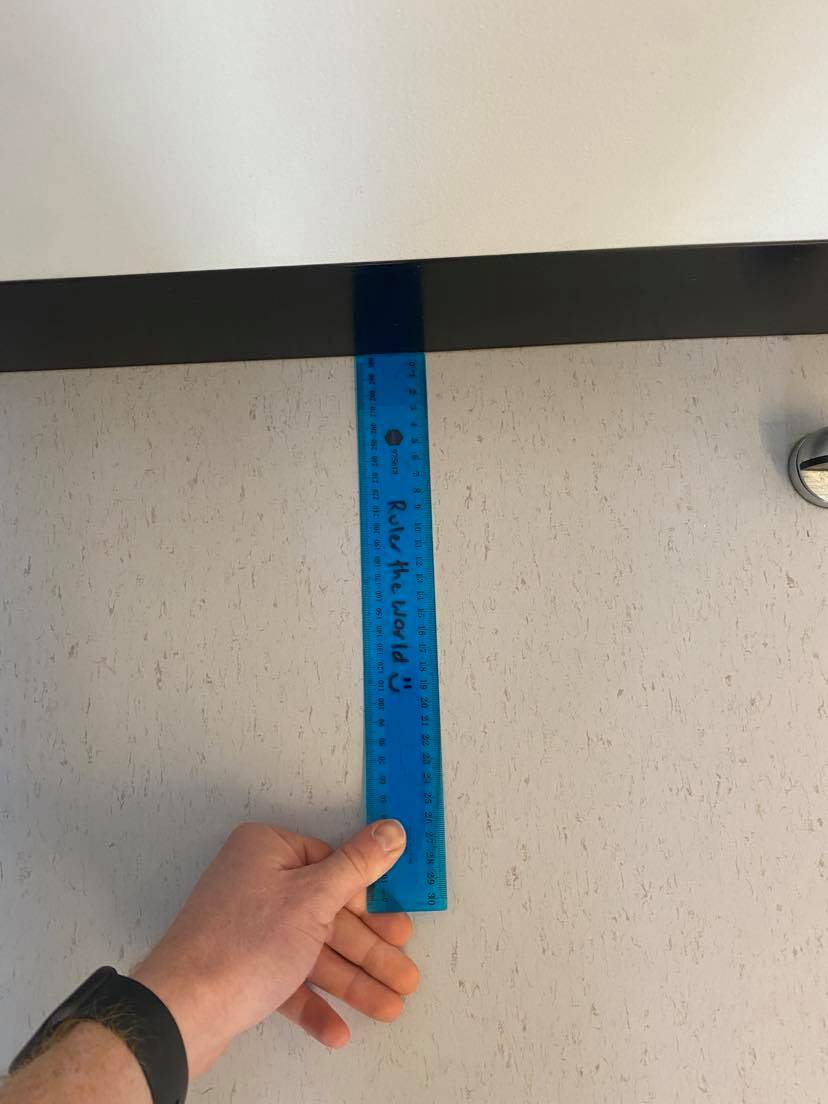
Your calves play an important role in your running. Are they sore or are they tight?
We have all been there after a hard running workout: sore calves. This is a common situation for all of us. We stretch out; we foam roll, and we get some short term relief. But, the big question remains, are those sore calves tight? Let's work it out.
Meet the knee-to-wall measure
The knee-to-wall (K2W) is a standard ankle range of motion assessment done in clinics. Also referred to as the weighted lunge test or the dorsiflexion test, we can measure calf tightness through this simple and effective measure.
To do the K2W assessment, all you need is a wall, tape measure or ruler, and a keen, honest eye on your heel.

Place a ruler or tape measure perpendicular to the wall

Measuring my right legs dorsiflexion!

Make sure your front foot's heel remains in contact with the ground while you lunge forward
What do those results mean? Well, excluding ankle joint or "boney" limitations, you have now just determined whether or not those sore calves are genuinely tight.
Interpreting your results
After doing both calves, here are a few things to keep an eye out for these two things:
- A K2W less than 8cm places you in a high-risk zone for a variety of injuries.
- Do your legs have a greater than 2cm difference between them? For example, left leg of 8cm and right leg of 11cm? That's a known risk.
If you said yes to less than 8cm or have one leg with a difference greater than 2cm, perhaps it is fair to say... Yes! You have a tight calf or calves.
The misinterpreted tight calf
When someone says their calves are tight, I believe they may accidentally be misinterpreting just a sore, overworked calf for a tight one. It is fair to say your muscles do feel tight when they are sore, but an objective measure like the K2W will help us truly determine whether or not you are tight.
Should you stretch?
Baxter et al. (2016) have shown that most studies suggest stretching has no impact on the risk of chronic injuries in endurance runners. In addition, High et al. (1989) showed us that, across 62 participants, those who stretched after runs versus those who did not have any significant difference in muscle soreness over 5-days.
However, I love stretching. It feels good. As far as I could see, there weren't any negative effects. So why should I stop doing something I enjoy?
What is the solution to tight calves?
If you have tight calves and have verified this through the K2W assessment, we would highly recommend you get in touch regarding the Solushin®. While the Solushin® was initially designed for medial tibial stress syndrome (shin splints), the device has shown its ability to improve ankle range of motion by 21% after an hour of wear while you kick back on the couch or make your dinner.
Sometimes we hear of even more impressive results, like Karli, who ticked both boxes for tight calves. Read about Karli's story here and how she reduced tension in her calves by 167%!
About the author:
Ben Lindsay is the Managing Director and engineer behind the Solushin medical device. A former national medalist swimmer, Ben aspires to learn from physicians, physiotherapists and podiatrists so he can develop tools to improve the quality of care for their patients.
